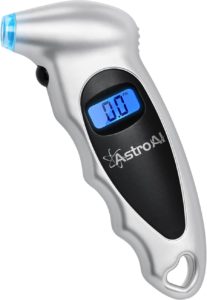The TPMS in your 2013 Honda is an essential feature that helps keep you safe on the road, and it’s crucial to understand how it works. In this article, we’ll dive deep into the inner workings of the 2013 Honda TPMS, explore common causes of tire pressure lights turning on, discuss when to reset your tire pressure light, and how to reset it.
A Brief Overview of Honda TPMS
Tire pressure monitoring systems have come a long way since their inception. The invention of tire pressure sensor technology revolutionized the way drivers monitor their tire pressure, and modern vehicles like the 2013 Honda come equipped with sophisticated TPMS systems.
The 2013 Honda’s TPMS is a direct system, which means it uses individual pressure sensors inside each tire to monitor tire pressure in real-time. These sensors then transmit the data to the vehicle’s onboard computer, which in turn alerts you if the pressure in any tire falls below the recommended level.
How to Reset Honda Accord TPMS
Resetting the TPMS in your 2013 Honda is a simple process. Here are the steps to follow:
Ensure your tires are inflated to the correct pressure as specified in your owner’s manual.
Turn the ignition to the “ON” position without starting the engine.
Locate the TPMS reset button. This is found on the left of the steering wheel under the green ECON button.
Press and hold the TPMS reset button until the warning light on the dashboard blinks twice.
Release the button, and the TPMS is now reset.
Keep in mind that the exact reset procedure may vary depending on your specific Honda model, so always refer to your owner’s manual for detailed instructions.
Why Proper Tire Pressure is Essential
Maintaining proper tire pressure is essential for a variety of reasons:
Optimal fuel efficiency
Prolonged tire life
Improved vehicle handling and stability
Reduced risk of tire blowouts and accidents
By using the TPMS in your 2013 Honda, you can ensure that your tires are always inflated to the correct pressure, giving you peace of mind and keeping you safe on the road.
Common Causes of Tire Pressure Light Turning On
Sometimes, the tire pressure light comes on for reasons that might not be obvious. Here are some common causes of the tire pressure light turning on:
Temperature changes: Tire pressure can decrease in cold weather, causing the light to turn on.
Slow leaks: A small puncture in the tire can lead to gradual air loss, triggering the TPMS.
Damaged sensors: The TPMS sensors can become damaged due to corrosion or impact, causing false readings.
Sensor battery failure: The battery life of TPMS sensors is finite, and when they die, the TPMS may malfunction.
Incorrectly inflated tires: Over Inflating or underinflating your tires can cause the TPMS light to illuminate.
When to Reset Your Tire Pressure Light
You should reset your tire pressure light in the following situations:
After inflating or deflating your tires to the correct pressure
After rotating your tires, as part of your vehicle’s tire rotation pattern
When you’ve replaced a damaged or malfunctioning TPMS sensor
When installing new tires on your vehicle
After repairing a punctured tire or fixing a slow leak
In case of seasonal temperature change that affects tire pressure
Conclusion
Understanding how the 2013 Honda tire pressure monitoring system works is crucial for maintaining optimal tire pressure and ensuring your safety on the road. By keeping an eye on your TPMS warning light, regularly checking your tire pressure, and knowing when and how to reset your TPMS, you can prevent potential issues and enjoy a smoother, safer driving experience.
Consider the advantages and disadvantages of using nitrogen instead of air in your tires for even better performance and tire longevity.
Stay vigilant, keep your tires in check, and enjoy the confidence that comes with knowing your 2013 Honda TPMS is working hard to keep you safe on the road.



